Tired of expensive tea shop visits but crave a perfect cup at home? Your kitchen's trusty coffee maker holds untapped potential for brewing diverse, flavorful teas that could revolutionize your daily routine.
You can brew most types of tea in a coffee maker, including herbal, black, green, and spiced varieties. For best results, use one tea bag or one teaspoon of loose tea per 6-8 ounces of water, adjusting the ratios based on your preferred strength and the specific tea type.
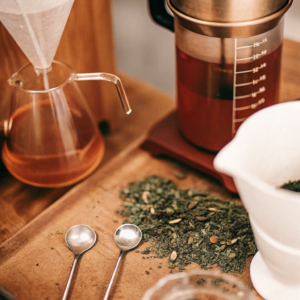
I've been experimenting with my coffee maker for brewing tea ever since a power outage left me without my electric kettle. The results surprised me - not only was it convenient, but it opened up a world of tea-brewing possibilities I'd never considered. Let's explore the different types of tea1 you can make with your coffee machine.
Can you really brew any tea with a coffee maker2?
The thought of using my coffee maker for tea initially seemed strange. Would it taste like coffee? Would the machine handle delicate tea leaves properly? These concerns kept me from trying until necessity forced my hand.
You can successfully brew most types of tea in a coffee maker, though results vary by tea variety and machine type. Drip coffee makers work best for black and herbal teas, while pour-over methods offer better control for green and white teas that require lower temperatures.
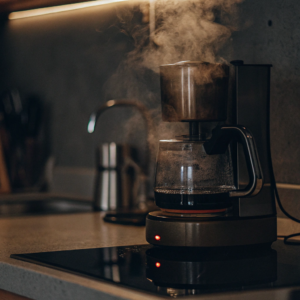 "Coffee maker in action brewing tea")
"Coffee maker in action brewing tea")
When I first tried brewing black tea in my drip coffee maker, I discovered it required some adjustments compared to coffee. The water passes through tea faster than coffee grounds, so I needed to use more tea than I would for a typical steep. Through trial and error, I found that different tea types respond differently to coffee maker brewing.
How do different tea types perform in coffee makers?
After my first successful experiment with black tea, I wondered if other varieties would work as well. Each tea has unique brewing requirements for optimal flavor extraction.
Different tea varieties require specific approaches when brewed in coffee makers. Black and herbal teas withstand higher temperatures and longer brewing times, while green, white, and oolong teas need gentler treatment to prevent bitterness and maintain their delicate flavors.
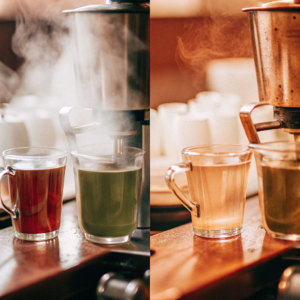
I've spent months testing various teas in my coffee maker, documenting the results to perfect each type. Here's what I've learned about brewing different tea categories:
| Tea Type | Water Temperature | Brewing Time | Special Considerations |
|---|---|---|---|
| Black Tea | Hot (200-212°F) | 3-5 minutes | Works excellently in standard drip machines |
| Green Tea | Warm (170-180°F) | 2-3 minutes | Use pause feature to prevent over-extraction |
| Herbal Tea | Hot (200-212°F) | 5-7 minutes | May require double-brewing for stronger flavor |
| White Tea | Warm (160-170°F) | 2-3 minutes | Best in machines with temperature control |
| Oolong Tea | Medium (180-190°F) | 3-4 minutes | Results vary by oxidation level |
For black teas like English Breakfast or Earl Grey, I place tea bags directly in the carafe for a stronger brew. Green teas require more attention—I've found using the coffee maker's "pause" feature to limit brewing time prevents the bitter taste that comes from over-extraction. Herbal teas have been the most forgiving, often producing excellent results regardless of brewing method.
What special tea recipes work best with coffee makers?
After mastering basic tea brewing, I became curious about more complex tea preparations. Could my coffee maker handle spiced chai or Southern sweet tea?
Coffee makers excel at brewing tea concentrates for special recipes like sweet tea, chai, and fruit-infused teas. The consistent water temperature and flow create reliable extractions that can be customized by adding spices, sweeteners, or fruit to the brew basket or carafe.
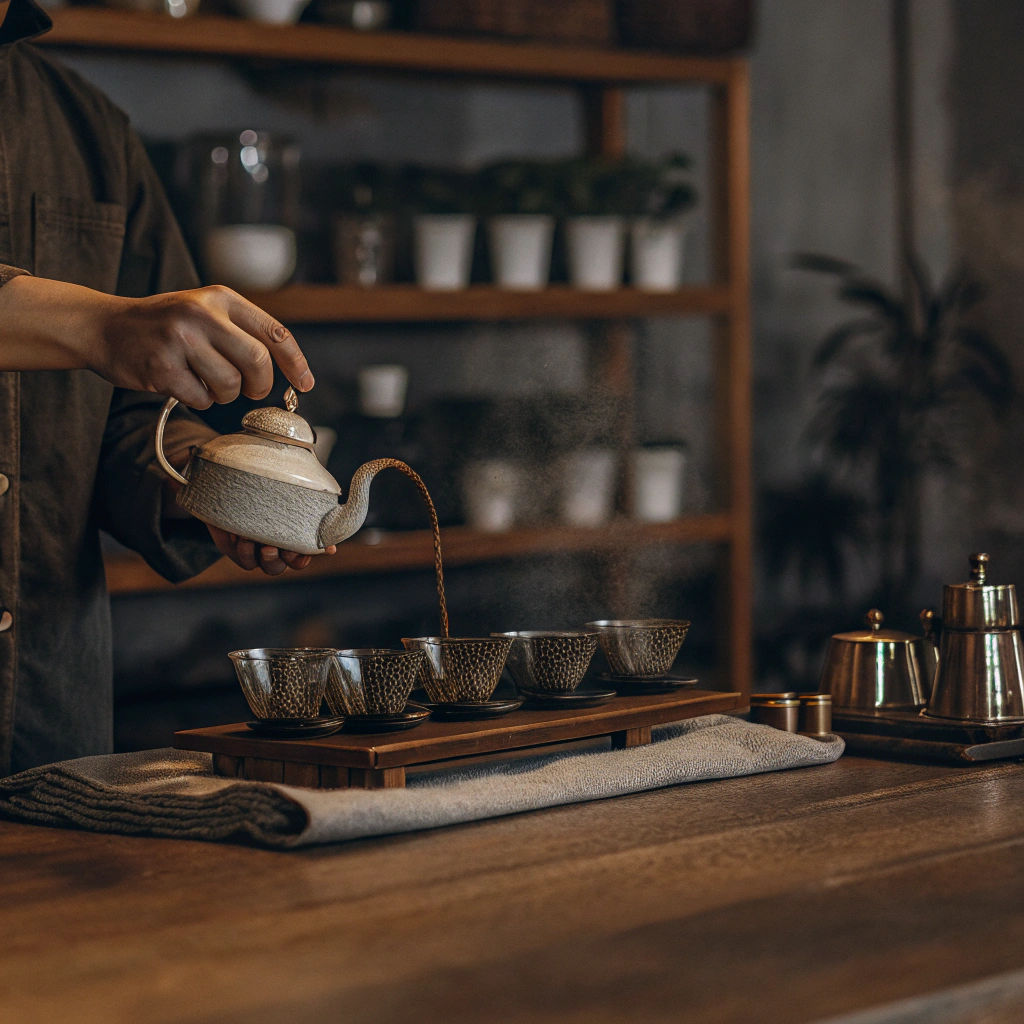
My favorite discovery was using my coffee maker for large-batch iced tea preparation. I place 8-10 tea bags in the carafe, brew a concentrated half-pot of water, then fill the remainder with ice. This flash-cooling method produces crystal-clear iced tea without cloudiness. For chai tea, I add cinnamon sticks, cardamom pods, and cloves to the brew basket along with black tea, creating a spiced base that only needs milk and honey added after brewing.
The coffee maker's uniform water distribution has proven perfect for creating consistent tea concentrates that can then be customized. Here are some special recipes I've perfected:
| Recipe | Ingredients | Coffee Maker Method | Finishing Touches |
|---|---|---|---|
| Southern Sweet Tea | 6 black tea bags, 1 cup sugar | Brew concentrated tea, dissolve sugar while hot | Add ice and lemon slices |
| Masala Chai | 4 black tea bags, cinnamon, cardamom, cloves, ginger | Add spices and tea to brew basket | Mix with warmed milk and honey |
| Berry Infused Tea | 4 green tea bags, 1 cup mixed berries | Place tea in basket, berries in carafe | Refrigerate for 4 hours before serving |
| Mint Refresher | 3 green tea bags, fresh mint bunch | Place mint in carafe, brew tea through it | Serve over ice with lemon |
| Turmeric Wellness Tea | 2 green tea bags, 1 tbsp turmeric, black pepper | Mix spices with tea in brew basket | Add honey and lemon after brewing |
How do you prevent coffee flavor from affecting your tea?
Once I committed to using my coffee maker for tea, a new concern emerged: would residual coffee oils taint my delicate teas with unwanted coffee flavors?
To prevent coffee flavors from affecting tea brewed in a coffee maker, thoroughly clean all components with a vinegar solution, use a dedicated water reservoir and carafe for tea, or consider purchasing a separate machine exclusively for tea brewing.
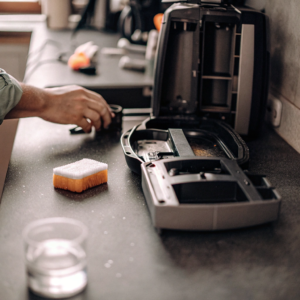
When I first started brewing tea in my coffee machine, I noticed subtle coffee notes in lighter teas like chamomile and white tea. This led me to develop a thorough cleaning routine before switching between beverages. I run a full pot of equal parts white vinegar and water through the machine, followed by two cycles of clean water to rinse. For the carafe and basket, I use baking soda paste to remove coffee oils that standard washing might miss.
After researching commercial solutions, I invested in a dedicated tea brewing basket that fits my coffee maker. This simple addition cost less than $15 and completely eliminated cross-contamination issues. For those who regularly brew both beverages, separating the equipment proves most effective:
| Component | Cleaning Method | Replacement Option | Effectiveness |
|---|---|---|---|
| Water Reservoir | Vinegar solution soak (1:1 ratio) | Dedicated tea reservoir (if detachable) | High |
| Filter Basket | Baking soda paste scrub | Tea-specific brewing basket | Very High |
| Carafe | Vinegar solution soak + baking soda scrub | Dedicated tea carafe | Medium |
| Water Lines | Run vinegar solution followed by clean water | Not replaceable | Medium |
| Hot Plate | Wipe with damp cloth + baking soda | Use thermal carafe instead | Low |
For my daily routine, I now keep a color-coded system—blue basket and carafe for tea, black for coffee—ensuring no flavor transfer occurs even when I'm brewing multiple beverages throughout the day.
Conclusion
Your everyday coffee maker can transform into a versatile tea brewing station with minor adjustments. From classic black tea to specialized wellness blends, the convenience and consistency offer a practical alternative to traditional methods.




